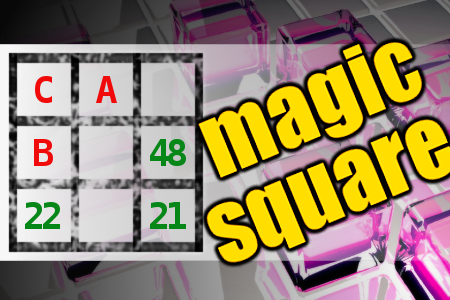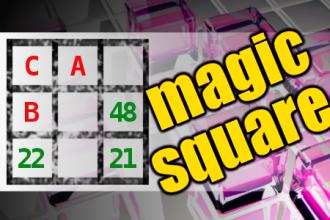MAGIC SQUARE: Calculate A+B+C
The aim is to place the some numbers from the list (20, 21, 22, 23, 27, 29, 48, 49, 55, 81) into the empty squares and squares marked with A, B an C. Sum of each row and column should be equal. All the numbers of the magic square must be different. Find values for A, B, and C. Solution is A+B+C.Correct answers: 10
The first user who solved this task is Nasrin 24 T.
#brainteasers #math #magicsquare

